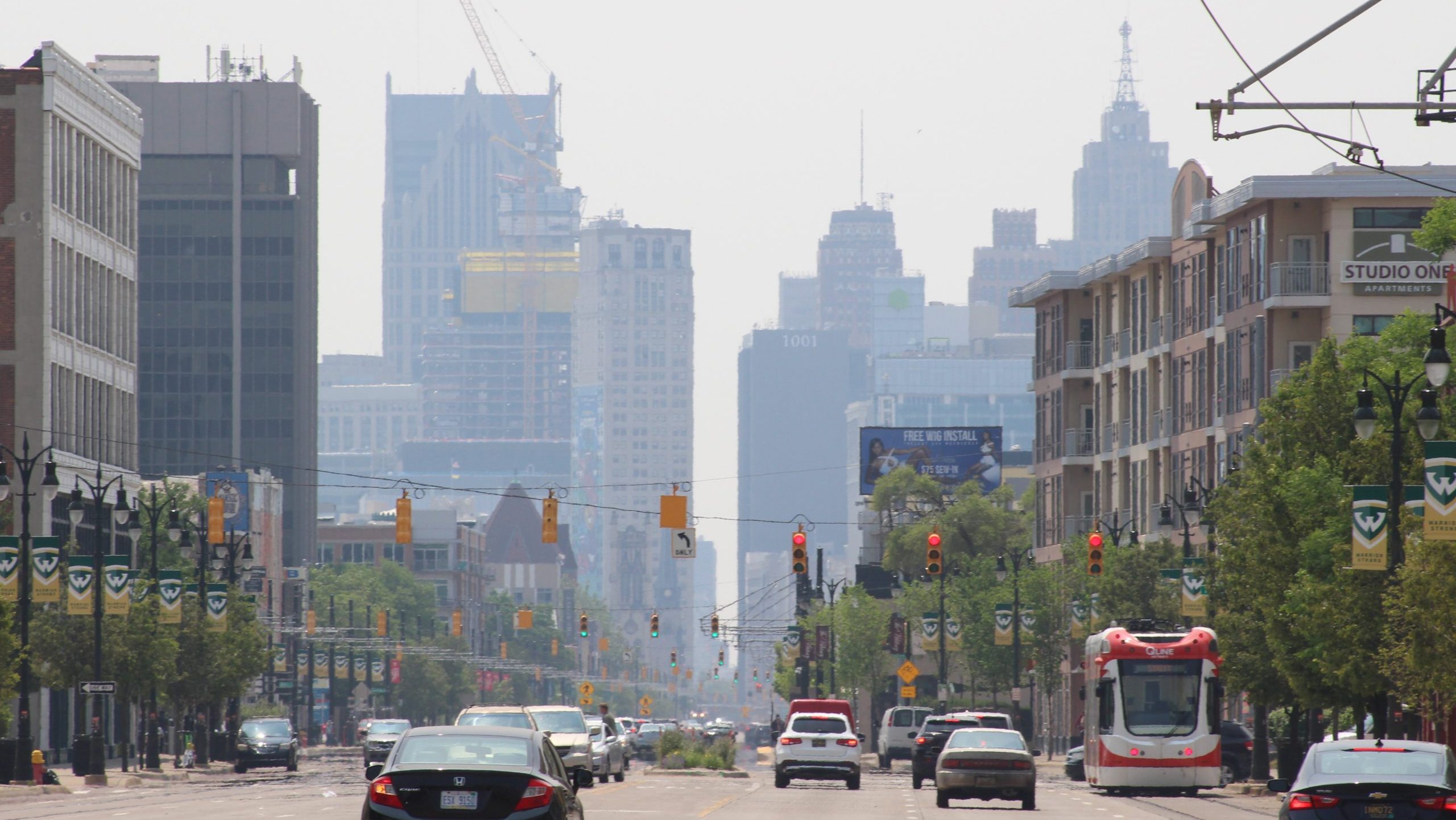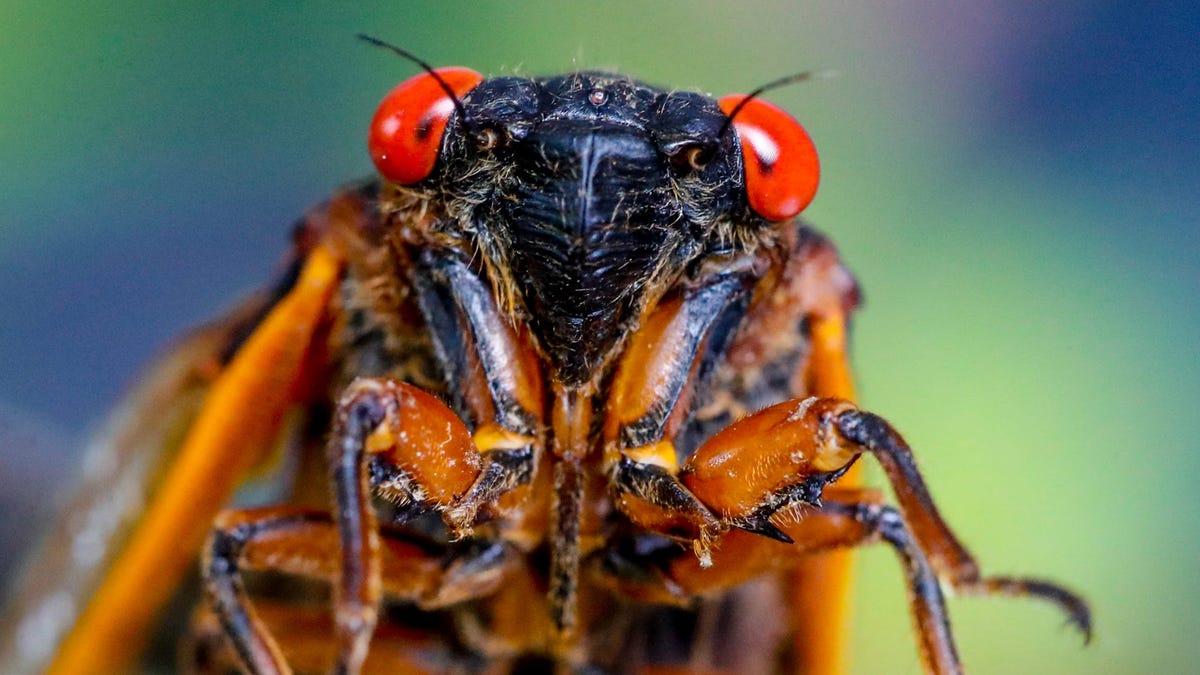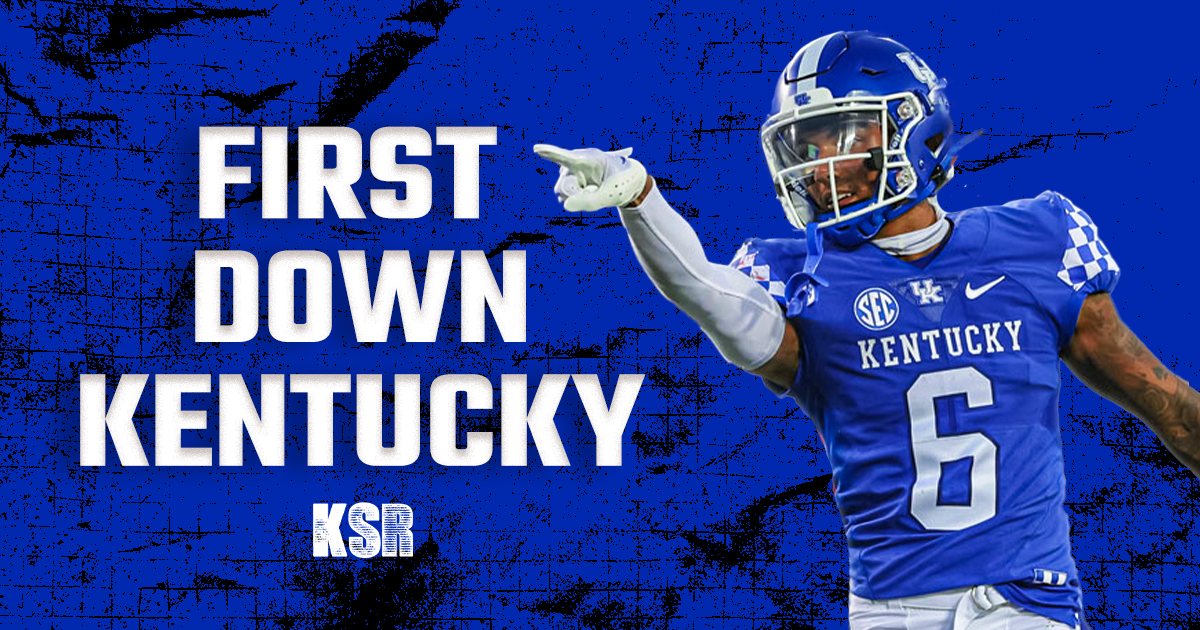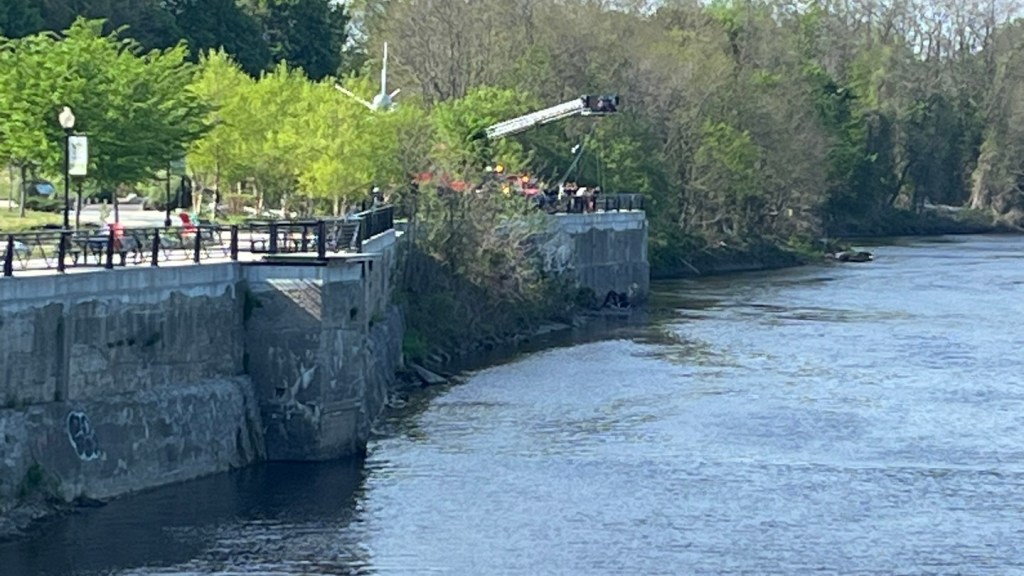Nevada
Swarms of ‘Cannibal’ Crickets Invade Small Nevada Town
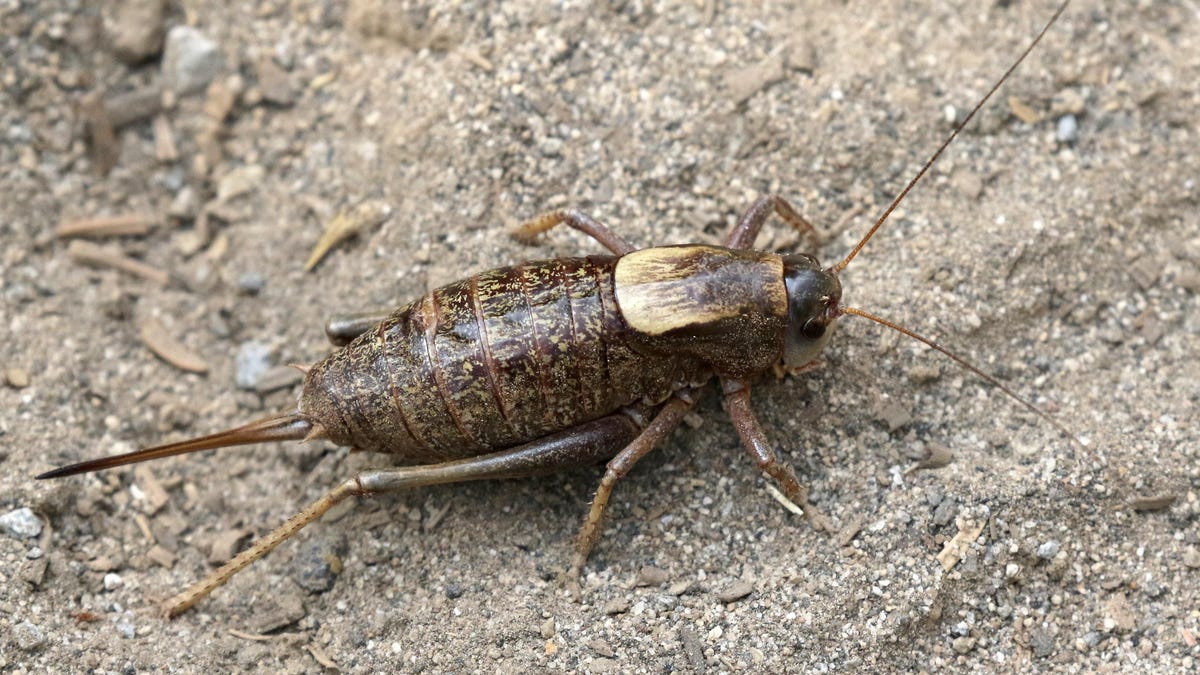
Elko, Nevada, is playing host to a real life horror movie scenario. The town is experiencing a substantial invasion of Mormon crickets. Thankfully, the imposing insects are not directly harmful to people.
The Mormon cricket (Anabrus simplex) is a relatively large flightless and black or reddish insect native to the western half of North America, with adults reaching up to three inches in length. It’s not a true cricket, but belongs to the related group of katydids, or bush crickets. The nickname comes from the role it’s said to have played during the “Miracle of the Gulls”—a supposed event in 1848 when seagulls suddenly emerged to feast on the crickets that were ravaging the crops planted by pioneer Mormon farmers in Utah.
While the tale might be apocryphal, Mormon crickets truly have been a persistent nuisance for humans in the area. Every year or so, a new batch of crickets hatch from eggs laid in the soil. They then group up and migrate throughout the region, devouring whatever vegetation they come across. Their plant-eating rampage often doesn’t reach towns and cities, but unfortunately not this year for the residents of Elko.
“It’s almost like a biblical plague,” resident Dana Dolan told The Associated Press last week. Charles Carmichael, the owner of a local pest control company, told CBC that millions of crickets have likely visited the town of 20,000 this summer.
This year’s invasion probably isn’t the largest ever to befall the region, but it is unusual. Normally, the eggs hatch earlier in the spring, but relatively wet conditions in Northern Nevada over the past winter and spring delayed their arrival while a recent drought in the area might have prompted their hatching now.
The bugs aren’t after humans, nor are they poisonous, but they apparently do smell awful. What’s worse, they’re opportunistic cannibals. Crickets squashed by humans or their cars can drive swarms of their brethren to engage in an impromptu feeding frenzy, creating the sort of visual that nightmares are made of. Hospitals and other busy businesses have also had to deputize employees to scoot away the insects using brooms, leaf blowers, and anything else on hand, though with no lasting success.
Elko’s infestation is expected to die down by mid-August, but it can take time for surges in Mormon cricket populations to stabilize. Outbreaks in the area have been known to last for five to 21 years at a time, according to the Nevada Department of Agriculture, and buried eggs can lay dormant for up to a decade or more.

Nevada
Nevada abortion-rights measure has enough signatures for November ballot, supporters say

LAS VEGAS — Abortion access advocates in Nevada said Monday that they have submitted almost twice the number of petition signatures needed to qualify a measure for the November ballot that would enshrine reproductive rights in the state constitution.
Supporters collected and submitted more than 200,000 signatures, Nevadans for Reproductive Freedom President Lindsey Harmon told reporters. Proponents need 102,000 valid signatures by June 26 to qualify for the ballot.
“The majority of Nevadans agree that the government should stay out of their personal and private decisions … about our bodies, our lives and our futures,” Harmon said at a rally with about 25 supporters outside the Clark County Government Center in Las Vegas.
Elections officials in Nevada’s 17 counties still must verify signatures and it’s not clear how long that will take.
In Washoe County, spokeswoman Bethany Drysdale said advocates delivered several boxes of signatures to the registrar’s office in Reno. Boxes also went to officials in Clark County, the state’s most populous and Democratic-leaning area, which includes Las Vegas.
Nevada voters approved a law in 1990 that makes abortion available up to 24 weeks of pregnancy, a point considered a marker of fetal viability. But Nevada is one of several states where backers are pressing to strengthen abortion access after the U.S. Supreme Court overturned Roe v. Wade.
Since then, several Republican-controlled states have tightened abortion restrictions or imposed outright bans. Fourteen states currently ban abortions at all stages of pregnancy, while 25 allow abortions up to 24 weeks or later, with limited exceptions.
People hold signs during a news conference by Nevadans for Reproductive Freedom, Monday, May 20, 2024, in Las Vegas. Abortion access advocates in Nevada said Monday they’ve submitted twice the number of petition signatures needed to qualify for a ballot measure aimed at enshrining what they term reproductive rights in the state constitution. Credit: AP/John Locher
Harmon said the effort to collect signatures was “very expensive” but declined to give an exact figure. She noted that the neighboring states of Idaho, Arizona and Utah have stricter abortion rules than Nevada.
Most states with Democratic legislatures have laws or executive orders protecting access. Voters in California, Kansas, Kentucky, Michigan, Montana, Ohio and Vermont have sided with abortion rights supporters on ballot measures. Supporters of abortion rights have qualified measures for ballots in Colorado and South Dakota, and Nevada is among nine other states where signature drives have been underway.
The measure would ensure “a fundamental, individual right to abortion” while allowing Nevada to regulate “provision of abortion after fetal viability … except where necessary to protect the life or health of the pregnant individual.”
Melissa Clement, Nevada Right to Life director, told The Associated Press her organization will continue to fight the proposed amendment in courts and at the ballot box.
People hold signs during a news conference by Nevadans for Reproductive Freedom, Monday, May 20, 2024, in Las Vegas. Abortion access advocates in Nevada said Monday they’ve submitted twice the number of petition signatures needed to qualify for a ballot measure aimed at enshrining what they term reproductive rights in the state constitution. Credit: AP/John Locher

“As a woman, nothing makes me angrier than Democrats taking one of the most difficult and traumatic decisions a woman can make and using it for political fodder,” Clement said. “Scaring women. It’s despicable.”
Signature-gathering is one of two tracks being taken in Nevada to get the measure on the ballot.
To amend the Nevada Constitution, voters must approve a measure twice. If the abortion amendment qualifies and is approved by voters this year, they would vote on it again in 2026.
In the Legislature, Nevada’s Democratic-majority lawmakers passed a 24-week right-to-abortion measure last year along party lines, teeing the issue up for another vote when lawmakers return next year for their next every-two-years session in Carson City. If approved then, the proposed constitutional amendment would be put on the 2026 statewide ballot.
Nevada
Walker River Tribe gets final $2.4M needed for clean water infrastructure project • Nevada Current

For years, members of the Walker River Paiute Tribe who depend on well water have been plagued by water scarcity, brought on by a lack of infrastructure and funding.
Between aging pipes, pollutants and regional drought, the tribe’s existing water infrastructure has been stretched to its limits — compromising both public health and economic development.
But after seven years of lobbying, the Walker River Paiute Tribe now has the funding it needs for a $12 million water system improvement project to secure a reliable and sustainable water supply for well users on the tribe’s reservation.
In total, the project will provide a comprehensive domestic water supply distribution system for more than 100 residences on the reservation.
Andrea Martinez, the chair of the Walker River Paiute Tribe, said the tribe hopes to complete the project in a little over two years. The project will secure clean drinking water, and expand the tribe’s capacity to add new homes on the reservation.
“This has been a priority for the tribe for years. And we’re fortunate to get funding for this project. It’s really humbling to see this come to fruition. It gives me hope for the next generations of our tribe,” Martinez said.
Last week, the Department of the Interior awarded the Walker River Paiute Tribe more than $2.4 million to construct a domestic water supply for communities solely dependent on well water.
That funding builds on a $5.2 million U.S Department of Commerce economic development grant to the tribe in 2023, a $1 million U.S. Environmental Protection Agency grant for water quality improvements, and $3 million in drinking water state revolving loan funds. The remaining funds would be covered by the additional American Rescue Plan funding awarded to the tribe.
The $2.4 million grant awarded last week will be used to construct a 410,000-gallon water storage tank on the Walker River Paiute Reservation for the project, which will include about 25,000 feet of pipe across the reservation, and a new water line needed to construct housing.
“We’re going to be able to bring our people back home by having this water infrastructure and building out homes. Ultimately, I think that’s going to help our tribe continue to grow and succeed and be fruitful in the future,” Martinez said. “I think once we have the water infrastructure, we’ll be able to see our vision.”
‘Coming back home’
Nevada has 21 federally recognized tribes that span 28 reservations, bands, colonies and community councils. Most reservations in Nevada are remote and face a host of challenges unique to rural communities, including lack of infrastructure, inadequate water treatment facilities, and limited funding.
Tribes in rural Nevada are highly vulnerable to water insecurity because of a lack of access to water infrastructure stemming from policy decisions made in the early days of federal agencies such as the Bureau of Reclamation.
Many homes that rely on well water don’t have adequate water pressure for home use, leaving residents with unreliable water access. A report by the Indian Health Service in 2019 noted that low water pressure in Walker River Paiute Tribe housing has led to health risks associated with bacteria growth in stagnant water.
Improvements to water infrastructure can reduce inpatient and outpatient visits related to respiratory, skin and soft tissue, and gastroenteric disease, according to IHS. Based on 2020 data, every $1 spent on water and sewer infrastructure can save $1.18 in avoided direct health care costs for these diseases.
Lack of adequate water pressure on the reservation also means that much of the reservation lacks the water pressure needed for piping fire hydrants, putting the tribe at severe risk of fire damage. Existing water storage capacity on the reservation falls short of meeting current codes for fire suppression, according to the Interior.
“It could have been detrimental to our community if there were fires in areas that didn’t have adequate water pressure,” Martinez said.
Lack of water infrastructure has cost the tribe, both in terms of public health and economic development, said Martinez.
“I think that’s probably one of the fundamental contributors to why we can’t have people come back home and work for the tribe. We talk about leaving the reservation, getting educated, coming back home to help your people and make something better for the tribe. But ultimately, what I have witnessed is that there are no homes for these individuals to come home to,” she said.
A number of current tribal employees are forced to live off the reservation despite a desire to return, due to lack of housing and the necessary infrastructure needed to support those homes, said Martinez.
“It’s just so sad and detrimental to see,” she continued.
The funding for water infrastructure is a huge game changer for the tribe, and will allow the tribe to build more homes and businesses, said Martinez. The tribe is also wrapping up a $1 million water rights settlement with the Bureau of Reclamation that will secure the tribe’s water rights to the Weber Reservoir, and recognize the tribe’s jurisdiction over groundwater on their reservation.
“This is considered a historical settlement for the tribe. I believe it’s been over 100 years that we’ve been fighting for our water,” Martinez said.
Once the water infrastructure project is complete, the tribe can utilize those hard-fought water rights for the tribe’s benefit, she said.
“We can continue to build capacity and become successful, but also build cultural preservation. If we have more citizens living on the reservation there could be a stronger sense of cultural preservation and connection to our traditions and heritage.”
The funding for the $2.4 million grant will come from the Inflation Reduction Act passed by Congress in 2022. In total, the Department of the Interior announced $147.6 million in funding for 42 drought resilience projects in ten states last week.
In a statement announcing the funding, Secretary of the Interior Deb Haaland applauded the Biden administration for “making record investments to safeguard local water supplies and build climate resilience now and into the future.”
“By working together in close coordination with states, Tribes and other stakeholders, we can provide much needed relief for communities across the West that will have a lasting impact for generations,” Haaland said.
Nevada
Top 10 Outlandish Things You Can Do in Nevada – Listverse
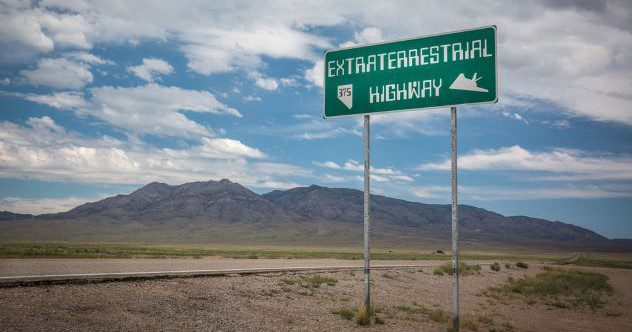
Most people know Nevada for its crazy shows and lax gambling rules, but the state extends far beyond Reno and Vegas. Desert oddities dot the Silver State, making it one of the most unexpectedly eccentric places in America. Here are some of the wildest and out-of-this-world things you can do in Nevada.
10 Mesmerizing Deserted Places
10 Eat at an Authentic Saloon
This is where you can finally live out your Wild West dreams.
The Pioneer Saloon in Goodsprings, Nevada, is the oldest working saloon in the Silver State, and it shows. Original tin walls and ceilings from 1913 make this building exactly like the kind you’ d imagine a cowboy striding into.
Actor Clark Gable spent three days straight pounding back drinks while waiting on the fate of his wife, Carole Lombard, who had recently gone down in a plane crash nearby. Lombard didn’t make it, and many say that her spirit haunts the saloon, searching for her lover.
Not just a place to eat, drink, and meet a ghost, the Pioneer Saloon is a kind of mini-museum, housing memorabilia from Goodsprings’ days of yore.[1]
9 Tell Time at Ryanhendge
Ryan Williams, CEO of Western Elite Landfill in Alamo, Nevada, paid tribute to his childhood love for the stars by creating his own solar calendar. Located over an hour outside of Vegas, far from the neon lights that ruin the view of the galaxy, Williams’ landfill is now home to a Stonehenge-themed sundial, labyrinth, and even a chess board.
The constellations are mapped to the 21st of each month, a reference to Williams’s own birthday (December 21). It took over ten years to complete the attraction, which also includes yin-yang symbols, Latin phrases, and other emblems to encourage visitors to relax and meditate.
And, of course, there are some aliens strewn about so you can tell all your friends back home that you had a truly otherworldly experience.[2]
8 Play with Construction Equipment
Who hasn’t wanted to get behind the controls of a bulldozer and see what happens?
Thanks to Ed Mumm, creator of Dig This Las Vegas, now you can. Mumm was building his home and realized that using the excavator he had rented was a ton of fun. He “felt that it was something everyone could enjoy, and there was nothing like it out there.”
This construction theme park gives customers a choice between classic bulldozers or hydraulic excavators, then lets them into the Nevada desert to dig up holes, build mounds of dirt, or compete in skill tests such as moving tires and basketballs.
It’s all the fun of being a construction worker, but without getting paid. But hey, if you’re into that, you do you![3]
7 Send a Letter to an Alien
When you think “Nevada,” no doubt you also think “aliens.” The 36th U.S. state has become synonymous with extraterrestrials thanks to alleged UFO sightings and the nearby secrecy of Area 51, a government-owned section of the desert rumored to be home to aliens (which I’ll get to again later).
If you’re not able to spot any otherworldly creatures, you’re in luck: You can send them some mail. Between the towns of Alamo and Rachel sits a mailbox marked “Steve Medlin,” a nearby ranch owner. Over the years, the mailbox’s proximity to Area 51 has attracted alien hunters and curiosity seekers, prompting Medlin to add a smaller, black mailbox a few yards away from his own for people to send letters (or perhaps receive them) from outer space.[4]
6 Get a New Stamp in Your Passport
Ever wondered what goes into making a country a country? If you ask Kevin Baugh, it just takes a lot of will.
In 1998, Baugh bought 11 acres (4.45 hectares) of land in Dayton, Nevada, and promptly declared it the Republic of Molossia. Baugh, of course, is the president (full title: His Excellency President Grand Admiral Colonel Doctor Kevin Baugh, President and Raïs of Molossia, Protector of the Nation and Guardian of the People), his wife the First Lady, and his daughter, who serves as Chief Constable.
Baugh welcomes tourists, but visitors should make sure to empty their grocery bags, as spinach and onions are banned from the country. Why? Because Baugh doesn’t like them.
If you break the rules, you’ll probably be thrown in jail, which, along with the post office, bank, and space force, was created by and run by Baugh. Even though the country is not recognized by the United Nations (or any other officials of the world), you can get your passport stamped upon entry. And while you’re there, be sure to grab the official drink of Molossia, the Molossolini: It’s a Shirley Temple with pineapple juice and fruits.[5]
5 Climb Mount Tikaboo
About 120 miles (193 kilometers) from Las Vegas sits an area of the Nevada desert that is surrounded by barbed wire, electric fences, “no trespassing signs,” and armed guards.
The Nevada Test and Training Range, better known as Area 51, has long been the subject of otherworldly speculation. There are reports from as far back as the 1950s pointing out mysterious objects in the air, but the public’s interest was really piqued in 1989 when a man claiming to be a former Area 51 employee told the public he had been hired to reverse-engineer extraterrestrial technology.
There’s a lot of evidence that this man, Bob Lazar, may be lying, but in a lot of ways, it doesn’t matter. Area 51 and, by association, the state of Nevada have come to be synonymous with aliens and other supernatural creatures.
Obviously, you can’t actually visit Area 51 unless you’re looking to get shot (there are signs around the area warning that deadly force will be used if necessary). However, a nearby mountain called Tikaboo Peak offers a partial view of the testing site from afar. It has become a popular attraction and a legal way to try to catch sight of a few aliens.[6]
4 Visit the Simpsons
As weird as it is to build an exact replica of the house from the long-running adult cartoon The Simpsons, the story of how it came to be is even weirder.
In 1997, as a publicity stunt for the then eight-year-old sitcom, Fox and Pepsi teamed up to raffle off a life-sized version of the house that the titular Simpsons family lived in. The designers watched over 100 hours of the show, and each room is accurate, down to the tiny irregularities in the architecture and the shade of the wallpaper. Pink walls and an orange couch helped create the illusion that visitors were really in Springfield rather than Henderson, Nevada.
Unfortunately, the winner of the raffle lived in Kentucky and wasn’t willing to relocate. She opted to take the $75,000 cash prize instead, leaving the house empty. With the odd layout and unconventional furniture (not to mention the home was located in an otherwise normal-looking Las Vegas suburb), the house didn’t sell. It was only after being repainted to more muted, beige colors that the home was bought. Today, it looks about the same as every other building on the block, but it still retains the same design as the famous family’s home.[7]
3 Drive on America’s Loneliest Road
In 1986, Life Magazine dubbed the Nevada stretch of U.S. Route 50 the “Loneliest Road in America.” Even though it was meant as an insult, with the rest of the article stating the highway is “totally empty” with “no points of interest,” the state instantly embraced the nickname. Today, you can even see the title on official road signs and buy “survival guides” for the parts that Life recommended no one drive through “unless they’re confident of their survival skills.”
While Route 50 itself stretches over 3,000 miles (4,828 kilometers) across America, from Maryland to California, the 408 miles (656 kilometers) that go through Nevada are practically barren. Other than Carson City, the largest town the road goes through is Ely, with a population of less than 4,000 people. Other stops along the highway include near-ghost towns that once prospered as mining settlements or Pony Express stagecoach stops, many of which still have authentic Wild West saloons and other oddities.[8]
2 Go to the McFarthest Spot
No matter where you are in America (or most of the world), you can be sure you’re never too far from some McNuggets and a McFlurry. Unless you happen to be in Tonopah, Nevada, otherwise known as the McFarthest spot.
When you’re in Tonopah, you’re 120 miles (193 kilometers) away from the nearest McDonald’s, further than any other spot in the contiguous United States. South Dakota claimed the McFarthest spot until 2014 when Tonopah’s only McDonald’s closed for unknown reasons—but a quick look at the former location’s 1.6 Yelp review rating might give you an idea of why the remote town is now free of the fast food conglomerate.[9]
1 Stay at the Clown Motel
Scared of clowns? Then, stay far away from Tonopah, Nevada.
The Clown Motel was opened in 1985 by Leona and Leroy David. The clown theme came from their father’s love of clown memorabilia, which they proudly stored in the lobby of the motel. It’s since come under new management twice, but both with the stipulation that the clown museum stays right where it is.
The motel offers regular rooms or clown-themed rooms. It makes patrons acknowledge that “By visiting The Clown Motel, you may encounter interaction with spiritual and/or unexplained phenomena” and states that “The Clown Motel will not be held liable for any bodily injury, damage to personal property, emotional distress, death or other harm caused by the former.”
Even if you’re not afraid of clowns, the Old Tonopah Cemetery, which is attached to the motel, will definitely send shivers down your spine.[10]
-

 News1 week ago
News1 week agoSkeletal remains found almost 40 years ago identified as woman who disappeared in 1968
-

 Movie Reviews1 week ago
Movie Reviews1 week ago“Kingdom of the Planet of the Apes”: Disney's New Kingdom is Far From Magical (Movie Review)
-

 World1 week ago
World1 week agoIndia Lok Sabha election 2024 Phase 4: Who votes and what’s at stake?
-

 World1 week ago
World1 week agoUkraine’s military chief admits ‘difficult situation’ in Kharkiv region
-

 Politics1 week ago
Politics1 week agoTales from the trail: The blue states Trump eyes to turn red in November
-

 World1 week ago
World1 week agoBorrell: Spain, Ireland and others could recognise Palestine on 21 May
-

 World1 week ago
World1 week agoCatalans vote in crucial regional election for the separatist movement
-

 Politics1 week ago
Politics1 week agoNorth Dakota gov, former presidential candidate Doug Burgum front and center at Trump New Jersey rally


